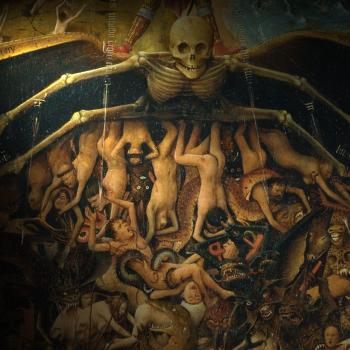The New York Times was not especially kind to either Mitt Romney or his faith during last year’s presidential election. Every so often, however, the gray lady runs a fascinating piece that pertains to the ways that Americans view Latter-day Saints.
Four years ago, the paper ran a story about how returned Mormon missionaries make great salesmen. The rationale was unsurprising:
missionaries simply have the right stuff. Many speak foreign languages learned in the mission field. All have thick skins from dealing with the negative responses that a missionary armed with a Book of Mormon and a smile can receive.
The story centered on the 2/3 or so of returned missionaries who comprise the greater part of Pinnacle Security’s sales force. “‘They’re used to knocking on doors, and they’re used to rejection,’ said Scott Warner, Pinnacle’s manager of the Chicago sales team.” Inured to doors slammed shut and conversations halted, former missionaries make a seamless transition to direct sales. One might add that the average twenty-three-year-old Mormon man — relative to other American men of the same age — is probably harder working and more ready to assume adult-like responsibilities.
Last weekend, the Times ran a more unusual piece on young, hard-working Mormons. It turns out that BYU has one of the best animation schools in the country. “When Hollywood Wants Good Clean Fun,” explained the headline, “It Goes to Mormon Country.” Shockingly, young Mormons are not just industrious and faithful. They are also hilarious. Take a look at the animation shorts included with the story.
The story has typical fun with the BYU honor code. Not just no premarital sex, but no caffeine. Also, BYU students eschew R-rated films. The author of the piece managed to find a student who through his off-campus jobs had “cleaned up Hollywood films and released family-friendly versions on DVD. Recently, the student told me, he digitally replaced a cigarette in a character’s hand with a pretzel.” It turns out that the students’ primary concerns were not sex and violence, but whether or not they walked away from a movie feeling uplifted.
The story reaches some unusual conclusions about young Latter-day Saints. Having experienced more of the world, they — despite their conservative values — are actually more “worldly” than average young Americans. Also, it is a great irony that while Mormons are brought up to be very wary of Hollywood, the entertainment industry finds them ideal prospective employees.
At the same time, the author of this piece reached some of the same conclusions as the author of the returned-missionary-salesman story:
Many students are already married with children by the time they graduate; they want to excel at their jobs to give their families stability. Many have served missions abroad, often deposited in third-world countries amid great suffering, and are years older than the typical college student by the time they graduate.
Having spent the better part of three summers at BYU, I think these rather stereotypical views of BYU students are mostly true. My Mormon friends might roll their eyes at me for saying so, but the BYU students I met were almost uniformly hardworking and mature.
These two stories are a small piece of the increasingly complex and — on average — more positive views that Americans today hold of Latter-day Saints. Complex because evangelicals respect Mormon family values and patriotism but sharply disagree with and often disparage Mormon theology and ritual. Complex because political and social liberals admire Mormon humanitarianism but sharply disagree with and often disparage the church’s patriarchy and opposition to same-sex marriage.
For rich and diverse insight into American images of Mormonism, see the ongoing series at juvenileinstructor.org.












